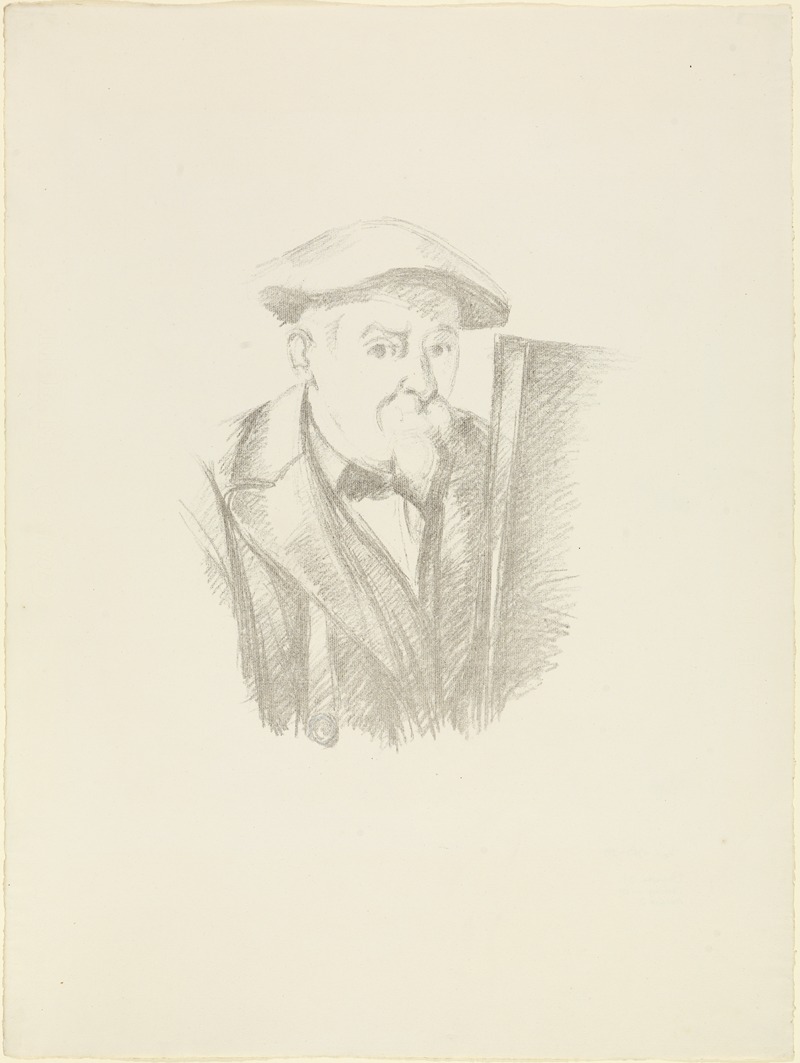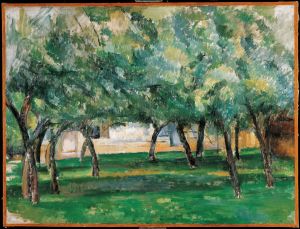
Selbstbildnis
A hand-painted replica of Paul Cézanne’s masterpiece Selbstbildnis, meticulously crafted by professional artists to capture the true essence of the original. Each piece is created with museum-quality canvas and rare mineral pigments, carefully painted by experienced artists with delicate brushstrokes and rich, layered colors to perfectly recreate the texture of the original artwork. Unlike machine-printed reproductions, this hand-painted version brings the painting to life, infused with the artist’s emotions and skill in every stroke. Whether for personal collection or home decoration, it instantly elevates the artistic atmosphere of any space.
"Selbstbildnis" (Self-Portrait) is a notable painting by the French Post-Impressionist artist Paul Cézanne. Born on January 19, 1839, in Aix-en-Provence, France, Cézanne is widely regarded as one of the most influential figures in the transition from 19th-century Impressionism to 20th-century Cubism. His work laid the foundation for the radical changes in the art world that followed, influencing artists such as Pablo Picasso and Henri Matisse.
Cézanne created numerous self-portraits throughout his career, and "Selbstbildnis" is one of the significant examples of his introspective work. This painting is an oil on canvas, a medium Cézanne frequently employed. The exact date of the painting is not definitively known, but it is generally placed around the late 19th century, a period when Cézanne was deeply engaged in exploring his unique style and technique.
In "Selbstbildnis," Cézanne presents himself with a direct and somewhat intense gaze, a characteristic feature of his self-portraits. The composition is straightforward, focusing on the artist's face and upper torso. The background is typically subdued, allowing the viewer to concentrate on the subject's expression and the painterly qualities of the work. Cézanne's use of color is notable; he employs a palette of earthy tones and subtle contrasts to model the forms of his face and clothing. The brushwork is deliberate and methodical, reflecting his meticulous approach to capturing the essence of his subjects.
Cézanne's self-portraits are often seen as a window into his complex personality and his relentless pursuit of artistic truth. Unlike many of his contemporaries, who sought to capture fleeting moments and the effects of light, Cézanne was more concerned with the underlying structure and form of his subjects. This approach is evident in "Selbstbildnis," where the solidity and weight of the forms are emphasized, giving the portrait a timeless and almost sculptural quality.
The painting is also a testament to Cézanne's evolving technique. Throughout his career, he moved away from the loose, fluid brushstrokes of Impressionism towards a more structured and analytical style. In "Selbstbildnis," this evolution is apparent in the careful construction of the image, where each brushstroke contributes to the overall sense of volume and depth.
"Selbstbildnis" is housed in the collection of the Musée d'Orsay in Paris, France, which holds an extensive collection of Cézanne's works. The museum is renowned for its collection of Impressionist and Post-Impressionist masterpieces, and Cézanne's self-portrait is a highlight of its holdings. The painting provides valuable insight into the artist's self-perception and his approach to portraiture, making it an essential piece for understanding his broader oeuvre.
In summary, Paul Cézanne's "Selbstbildnis" is a significant work that encapsulates the artist's distinctive style and his introspective approach to self-portraiture. Through its careful composition, deliberate brushwork, and thoughtful use of color, the painting offers a profound glimpse into the mind of one of the most pivotal figures in the history of modern art.


















